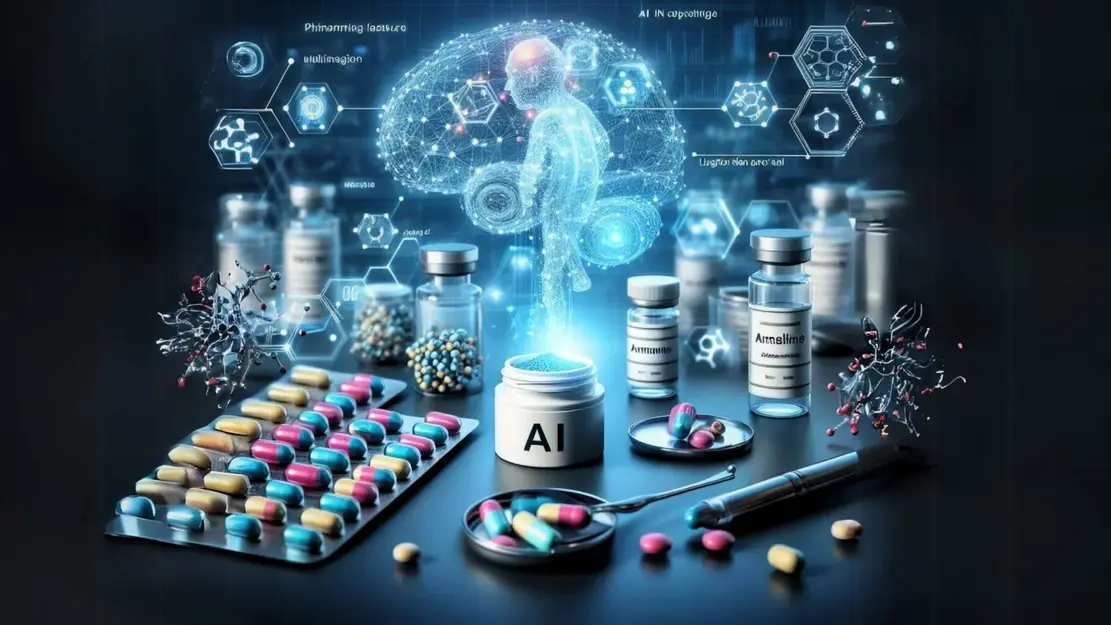Radiology, long defined by the laborious manual review of complex images, is changing. Artificial intelligence (AI) is developing into a powerful technology that is becoming an integral part of radiologists’ workflows. This technological transformation goes beyond automation and supports disease diagnosis. AI uses machine learning and deep learning algorithms to discover subtle patterns in medical images invisible to humans, leading to improved diagnostic accuracy and insights. This article explores how AI is being applied in radiology to improve imaging protocols, diagnostic accuracy, workflow efficiency, and patient care, transcending the hype and creating a more personalized and efficient standard.
Core Technology: AI Medical Image Perception:
AI in radiology is based on convolutional neural networks (CNNs), a deep learning approach inspired by the visual brain. While traditional software follows rules, CNNs learn from data. Expert radiologists train their algorithms by examining and analyzing thousands of anonymized medical images, including X-rays, CT scans, and MRIs. These examples teach the algorithms to find precise patterns and relationships between pixels that indicate specific conditions, such as small fractures, lung nodules, or early signs of tumors. AI doesn’t “see” images as humans do; it mathematically deconstructs them into hierarchical layers of information and learns to recognize increasingly complex shapes and textures by making highly accurate predictions about new images. AI has a unique advantage in radiological vision science because it can learn from experience.
Advances in Detection and Accuracy:
One of the greatest benefits of AI in radiology is its improved diagnostic accuracy and consistency. AI algorithms excel at detection and segmentation, acting as a powerful “second pair of eyes.” In mammograms, AI technology can detect dangerous areas of breast cancer, reducing false negatives and false positives and avoiding patient concerns and biopsies. AI can measure the volume of brain lesions in patients with multiple sclerosis and track subtle changes over time more accurately than manual methods. AI-assisted measurements have been shown to improve radiologists’ sensitivity and specificity, leading to more accurate diagnoses. This alliance does not replace radiologists; rather, it enhances their skills and reduces the risk of missing crucial findings in large, complex examinations.
Accelerating Workflows and Prioritizing Critical Cases:
Radiology departments are under pressure to analyze more imaging results quickly and accurately. Artificial intelligence (AI) helps manage this workload. Triage algorithms can automatically evaluate completed imaging and prioritize urgent cases. AI can immediately assess non-contrast head CT scans suspected of stroke, identify bleeding or severe vessel blockages, and alert the stroke team, saving valuable time. AI can also automate time-consuming procedures such as tumor assessment, cardiac ejection fraction calculation, and quantitative reporting. Automating routine measurements frees radiologists to focus on challenging patients, shortens report turnaround time, reduces fatigue, and improves department efficiency.
The Rise of Quantitative and Predictive Imaging:
AI is transforming radiology from a predictive perspective to a predictive one. AI systems can identify biomarkers that predict health outcomes by extracting vast amounts of subvisual data from typical imaging that humans cannot see. Radiomics leverages quantitative medical imaging capabilities to build predictive models. AI may be able to predict genetic makeup or response to specific chemotherapy drugs by assessing the texture and heterogeneity of lung cancer tumors on CT scans, thus avoiding invasive biopsies. AI can also predict side effects based on cardiac MRI data or the risk of osteoporosis based on routine bone density X-rays. By shifting radiology reports from a descriptive perspective to a predictive one, personalized treatment plans can be developed.
Addressing Challenges and Ethics:
While AI holds great potential in radiology, it faces numerous ethical and practical obstacles. The “black box” problem—the inability to understand how complex AI programs make their decisions—can exacerbate concerns about trust and accountability. When collecting vast amounts of data for training AI models, HIPAA-compliant privacy and security of patient data are crucial. Data bias: algorithms trained on data from one population or scanner may perform poorly on other populations or devices, leading to health disparities. Finally, if AI misses a diagnosis, who is responsible: the radiologist, the hospital, or the software developer? Addressing these challenges requires robust validation, transparent algorithms, and appropriate oversight.
The Radiologist of the Future – AI Collaboration:
The future of radiology lies in collaboration, not automation. Radiologists of the future will integrate information, not interpret images. AI will perform quantitative tests and measurements, while radiologists provide context, clinical relevance, and nuanced decision-making that machines cannot. They will monitor AI output, manage complex cases, and communicate with patients and referring physicians. This collaboration enables radiologists to achieve the highest levels of their license. Radiologists must continuously learn AI principles to validate and apply these technologies to improve patient care, rather than imposing them on others.
Conclusion:
Artificial intelligence in radiology is a paradigm shift that will transform diagnostic medicine. This transformative power enhances every aspect of imaging, from acquisition speed to diagnostic insights. As a tireless assistant, AI helps radiologists achieve exceptional accuracy, efficiency, and predictive capabilities. Data privacy, algorithmic openness, and ethical compliance remain challenges, but collaboration is the solution. The combination of human skill and machine precision will redefine radiology and make it a fundamentally technology-driven field, enabling earlier diagnoses, more effective treatments, and better patient outcomes worldwide.
FAQs:
1. Will AI replace radiologists?
It is believed that AI will enhance, not replace, radiologists’ skills. AI excels at pattern detection and quantification, but physicians possess clinical backgrounds, empathy, and complex decision-making skills. Radiologists’ responsibilities include managing AI output, combining image data with other patient data, and performing more complex surgeries.
2. How can AI improve the accuracy of radiological diagnoses?
AI systems trained on massive datasets can detect subtle patterns and abnormalities in medical images that humans might miss. They act as powerful second readers and help radiologists detect small nodules and microfractures, reducing human error and increasing diagnostic confidence.
3. Is AI in radiology safe and regulated?
AI applications in radiology, particularly scanning microangiography (SaMD), are strictly regulated by the US FDA and the European CE. Before clinical use, they require extensive clinical validation to confirm safety and efficacy. Continuous monitoring and validation in practice are crucial.
4. Can AI accelerate the generation of radiology results?
Absolutely. AI can quickly assess images, prioritize critical conditions such as strokes and hemorrhages, and alert clinical teams. It can also automate manual measurements and report generation, accelerating radiologists’ workflow and reporting.
5. What is the relationship between radiomics and AI?
Radiomics extracts quantitative features from medical images that are invisible to humans. AI and machine learning algorithms evaluate this high-dimensional data to identify patterns that predict diagnosis, prognosis, and treatment response, transforming ordinary images into personalized medical data.


